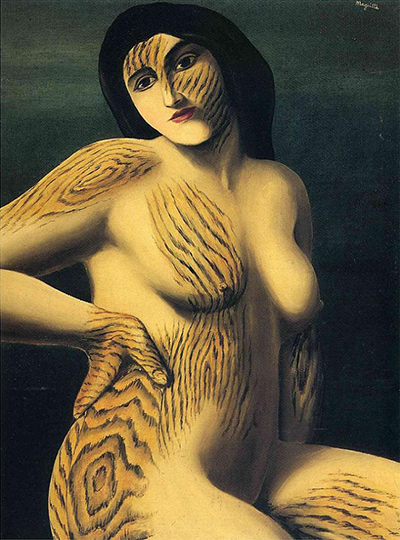René François Ghislain Magritte was a Belgian born painter that lived from 1898 to 1967. Before dying at the age of 68, he had a great influence on the conceptual, pop and minimalist art styles.
His greatest strength was in his ability to take every day images and objects and depict them in an unusual way or in an unusual context. He created many thought-provoking images in his life. Among his most notable paintings were Golconda, The Portrait, On the Threshold of Liberty and The Human Condition to name a few. He was a major part of the surrealism movement of the time.
In his painting entitled “Discovery”, he depicts a naked woman with unusual, woody textures on parts of her skin. The title speaks to the nature of the painting: the unknown is revealed. Unlike many similar paintings of the time, the image of the naked women is disturbed by the material of the skin. The wood grain used was one of Magritte’s obsessions.
The wood texture that appears to be tattooed onto the skin creates both a voluptuous and somber quality to the painting. The woman appears to be going through a transformation and as such, it removes the image from the semi-dream style. Magritte saw this painting as a combination of objects representing an evolution from one thing to another. There is a sense of flame-like patterns in the texture of the wood, and when combined with the charm of the woman’s naked body, it shows the degree of his conceptual power as a painter.
Discovery was completed by Magritte in 1928. It was early in his career as an artist. It still held true to the style that Magritte had by taking normal images and transforming them into something else entirely. 1926 marked his first attempts at surrealist paintings with his painting “The Lost Jockey”. Just prior to painting Discovery, Magritte was criticised for his work, leading to a depressed state and his move to Paris. In Paris, he joined the surrealist movement, quickly becoming a leading member.




